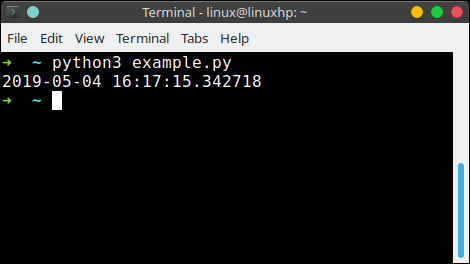To print the current date, we can utilize the datetime module. Dates are objects, like anything in Python. Datetime has several subclasses, which can be confusing at first.
Related course: Complete Python Programming Course & Exercises
Date Example
We can use its method strftime() to change the format.
To show the current date (today):
import datetime |
This will show the date in the format
YYYY-MM-DD
If you want another format, use the method strftime():
import datetime |
DD-MM-YYYY
Get current time in Python
You can get the current time like this:
import datetime |
To get the date and time, use:import datetime
currentTime = datetime.datetime.now()
print(currentTime)

Format codes
When using the method strftime() we can specify the type of date format we want to show.
So which format codes do we have?
| Format Code | Meanining |
|---|---|
| %a | Locale’s abbreviated weekday name. |
| %A | Locale’s full weekday name. |
| %b | Locale’s abbreviated month name. |
| %B | Locale’s full month name. |
| %c | Locale’s appropriate date and time representation. |
| %d | Day of the month as a decimal number [01,31]. |
| %f | Microsecond as a decimal number [0,999999], zero-padded on the left |
| %H | Hour (24-hour clock) as a decimal number [00,23]. |
| %I | Hour (12-hour clock) as a decimal number [01,12]. |
| %j | Day of the year as a decimal number [001,366]. |
| %m | Month as a decimal number [01,12]. |
| %M | Minute as a decimal number [00,59]. |
| %p | Locale’s equivalent of either AM or PM. |
| %S | Second as a decimal number [00,61]. |
| %U | Week number of the year (Sunday as the first day of the week) |
| %w | Weekday as a decimal number [0(Sunday),6]. |
| %W | Week number of the year (Monday as the first day of the week) |
| %x | Locale’s appropriate date representation. |
| %X | Locale’s appropriate time representation. |
| %y | Year without century as a decimal number [00,99]. |
| %Y | Year with century as a decimal number. |
| %z | UTC offset in the form +HHMM or -HHMM. |
| %Z | Time zone name (empty string if the object is naive). |
| %% | A literal ‘%’ character. |
